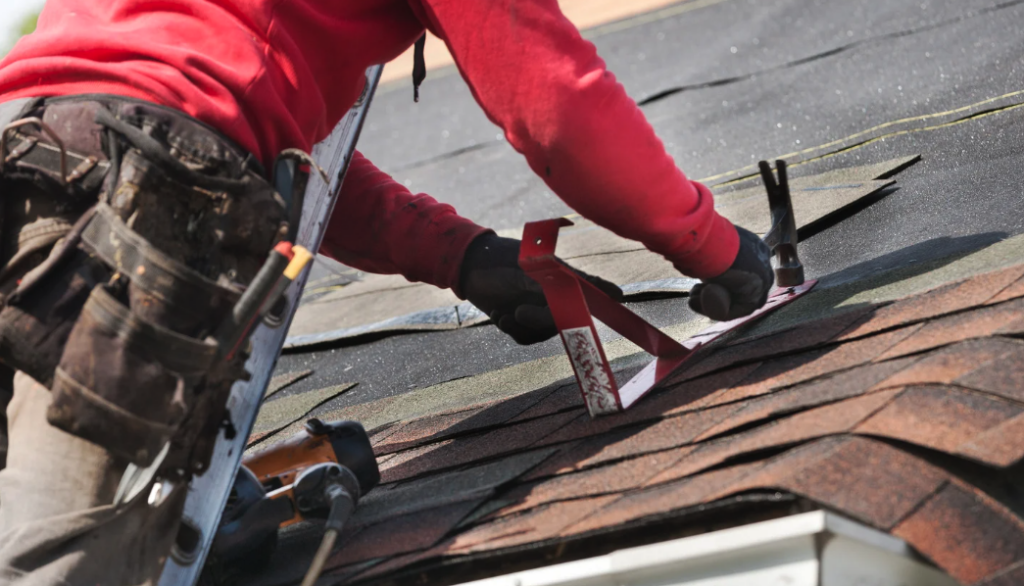
Roofing is one of the most hazardous professions, with workers often exposed to significant risks while on the job. Ensuring safety isn’t just a legal responsibility but also crucial for the well-being of contractors and crew members. In this blog, we’ll outline essential safety practices and tools—such as Pitch Gauge—that every roofing professional should implement to minimize risks and maximize efficiency.
1. Plan Ahead: Safety Starts with Preparation
- Site Assessment: Before stepping foot on the roof, conduct a thorough inspection of the site. Check for hazards such as unstable surfaces, power lines, or extreme weather conditions.
- Utilize Roofing Software for Planning: Tools like Pitch Gauge help with site assessments, allowing contractors to measure roof pitches and dimensions without needing to climb up first. This reduces the time spent on risky surfaces and improves accuracy.
- Emergency Preparedness: Ensure there’s a clear plan for emergencies, including a designated first-aid point and quick access to medical services.
2. Proper Personal Protective Equipment (PPE)
- Wear Safety Harnesses: OSHA regulations require the use of fall protection, such as harnesses and guardrails, when working at heights. Ensure all crew members are equipped with these essential tools.
- Helmets and Boots: Hard hats and steel-toe boots should be mandatory to protect workers from falling debris or tools.
- Appropriate Clothing: Workers should wear high-visibility, weather-appropriate clothing to minimize exposure to environmental hazards.
3. Ladder Safety: A Key to Reducing Falls
- Choose the Right Ladder: Ensure that ladders are stable, the right height, and secure when positioned. Avoid using ladders on slippery or uneven ground.
- Follow the 3-Point Rule: Always maintain three points of contact when climbing ladders (either two hands and one foot or two feet and one hand).
- Inspect Ladders Regularly: Make it a habit to inspect ladders for wear and tear before use. Discard any that show signs of damage or instability.
4. Fall Protection: The Most Critical Safety Measure
- Install Guardrails: Where possible, install guardrails or temporary fencing around the perimeter of the roof to protect against falls.
- Use Safety Nets: Safety nets are an additional layer of protection, especially on larger commercial roofing projects.
- Rooftop Warning Lines: Set up warning lines around roof edges to alert workers of proximity to dangerous areas.
5. Training and Awareness
- Roofing Safety Training: Provide all workers with comprehensive safety training before they set foot on a roof. This includes recognizing potential hazards, using PPE correctly, and emergency procedures.
- Regular Safety Meetings: Hold frequent safety meetings to reinforce best practices and address any new risks or changes in the project.
- Utilize Technology for Training: Roofing software like Pitch Gauge can be used to simulate roof measurements and planning, reducing the need for physical presence on high-risk sites during training.
6. Weather Conditions: Never Underestimate the Elements
- Monitor the Weather: Always check weather conditions before starting any roofing project. Avoid working during storms, high winds, or extreme heat, as these conditions significantly increase the risk of accidents.
- Heat Safety: On hot days, ensure that workers are staying hydrated, taking breaks in shaded areas, and wearing sun-protective clothing.
- Cold Weather Precautions: In icy or snowy conditions, ensure the roof is cleared and free of slipping hazards before work begins.
7. Safe Material Handling
- Use Proper Lifting Techniques: Roofing materials are often heavy. Train workers to use proper lifting techniques to avoid strains or injuries.
- Store Materials Safely: Keep materials in a secure location on the ground until needed to prevent them from being blown off the roof or causing tripping hazards.
- Pitch Gauge for Material Estimates: With the Pitch Gauge app, you can calculate the exact amount of materials needed for a job, reducing the need for over-ordering or handling unnecessary loads on the roof, further increasing safety.
8. Use Technology to Enhance Safety
- Pitch Gauge for Roof Measurements: One of the best ways to reduce on-roof time is by using the Pitch Gauge app. It allows contractors to get precise roof measurements from the ground, decreasing the need for physical roof access and minimizing risk.
- Real-Time Project Updates: The Pitch Gauge platform also integrates with other tools like CRMs and project management systems to track job progress in real time, keeping everyone informed and reducing miscommunication, which often leads to unsafe conditions.
- Simplify Inspections and Reports: Roofing professionals can use PG Roof Reports from Pitch Gauge to easily generate roof inspection reports without physically being on the roof, increasing efficiency and safety.
9. Communication: Keep the Crew Informed
- Open Lines of Communication: Ensure all workers can easily communicate with each other, whether through radios or mobile devices.
- Clear Instructions: Before starting a task, ensure that all workers understand their roles and responsibilities. Avoid unnecessary movement or miscommunication on the roof.
- Daily Safety Check-Ins: Have a brief meeting at the start of each day to go over the tasks, potential hazards, and any updates on the project.
10. Post-Job Cleanup: Don’t Overlook This Critical Step
- Clear Debris and Materials: Once the roofing job is complete, remove all debris, tools, and leftover materials from the roof to prevent future accidents or damage.
- Inspect for Hazards: Conduct a final safety inspection of the roof and surrounding areas to ensure no hazards remain.
- Properly Store Equipment: Securely store ladders, harnesses, and other tools to prevent accidents or unauthorized access.
In conclusion, Roofing safety is a critical aspect of running a successful business and protecting your crew. By investing in proper training, using high-quality equipment, and leveraging tools like Pitch Gauge, contractors can significantly reduce risks on the job. Safety should always be the top priority, ensuring every team member returns home safe at the end of the day.
By following these best practices, you not only comply with safety standards but also build a culture of safety and professionalism within your roofing business.